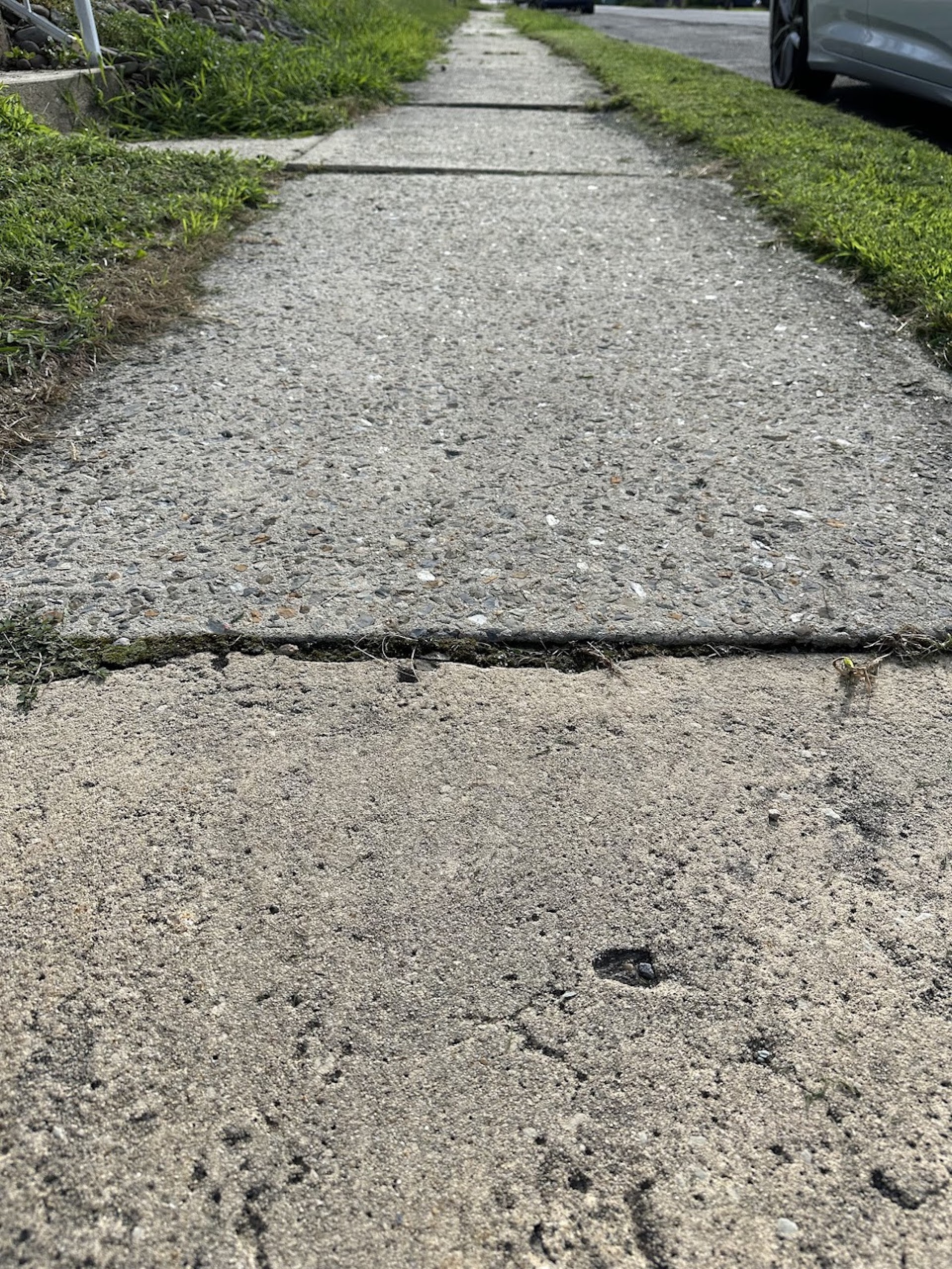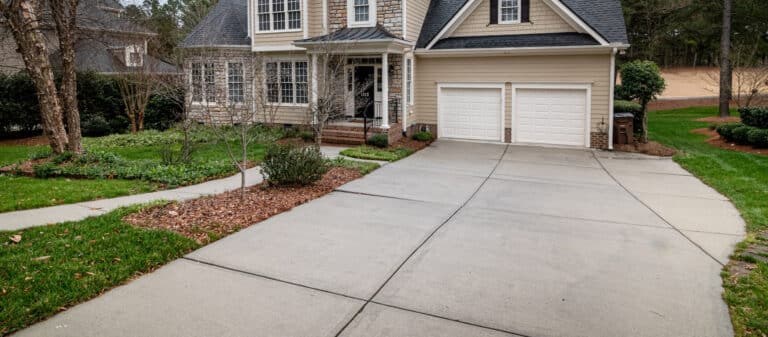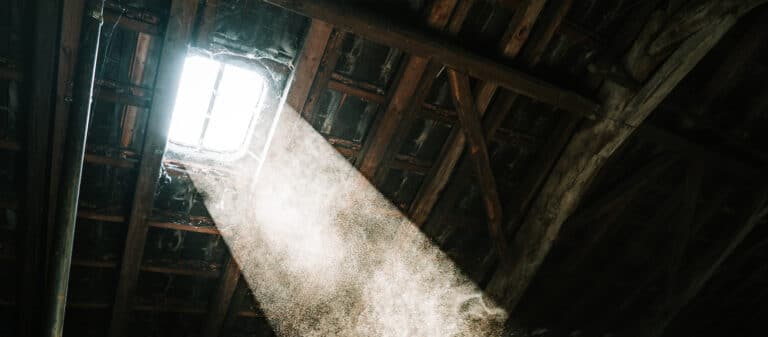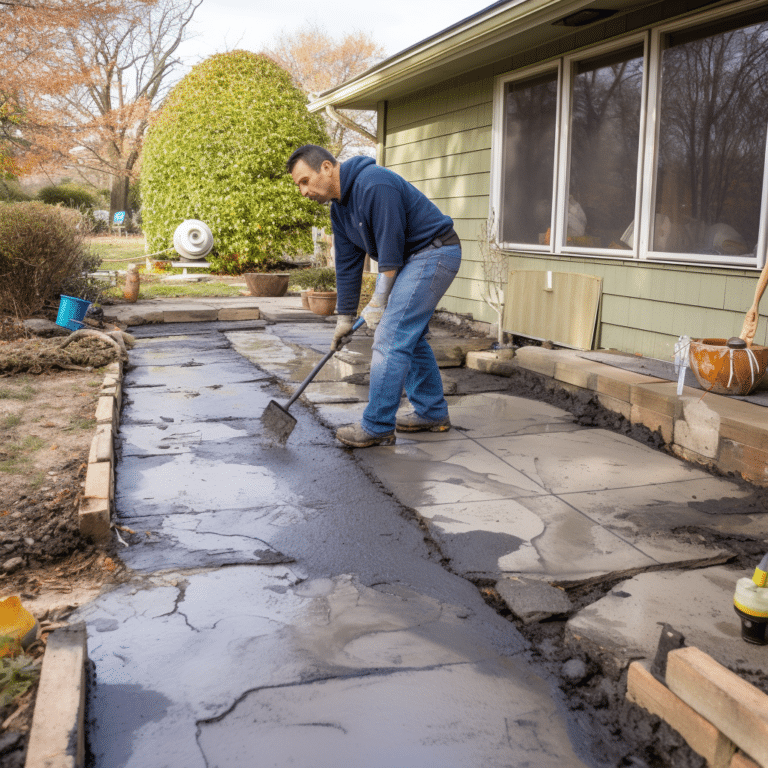Pennsylvania homeowners are often upset to learn they are responsible for sidewalk repair and anything under it, including utility lines connecting to their property.
While a walk down any community in the hilly terrain of Northeast PA will find you littered with cracked and uneven sidewalks, homeowners may be liable for any damage or injury that occurs from their sidewalks.
In many cases, an unlevel sidewalk can also be the first sign of a deeper problem, such as a tree root that could penetrate their utility lines and cause further financial headaches.
With affordable solutions like polyjacking available to level uneven sidewalks, homeowners don’t need to sacrifice much to make their sidewalks even and appear new.
This guide will provide a list of five solutions to level your sidewalks when soil compaction and tree roots run awry and one solution you should avoid.
Why Uneven Sidewalks Are Dangerous
While it’s true that many older neighborhoods, such as Green Ridge and West Pittston, are littered with jutting sidewalks that make pushing a stroller impossible, these obstructions are more than just an eyesore. A protruding or uneven sidewalk can be a serious tripping hazard, leading to various injuries, from scrapes to fractures.
Similar to sidewalk repair, PA homeowners are also responsible for any injuries that occur from sidewalk hazards that abut their property. When all is said and done, you could end up paying substantially more for a personal liability suit or increased insurance coverage than you would to easily level your sidewalk and get you on your way.
What Causes Unlevel Sidewalks
Before we discuss the various ways to repair and level your sidewalk, it’s important to discuss what causes unlevel slabs. This will help us determine what solutions work best and why we should avoid others.
Some common causes of unlevel sidewalks in Northeast Pennsylvania include:
- Soil Erosion: Over time, the soil beneath sidewalks can erode due to rain, water runoff, or poor drainage, causing slabs to sink or shift.
- Tree Roots: As trees grow, their roots can push up against sidewalk slabs, creating bumps and cracks.
- Freeze-Thaw Cycles: In colder climates, water can seep into cracks in the concrete and freeze, expanding and causing the slab to lift or crack further.
- Poor Construction: Sometimes, sidewalks are not constructed on a stable base, leading to settling or shifting over time.
- Heavy Loads: Consistently parking heavy vehicles on a sidewalk can cause it to sink or crack.
5 Methods to Level Sidewalks
Now that we’ve discussed the dangers and causes of uneven sidewalks let’s examine the five best ways to level them.
1. Polyurethane Foam Injection
Polyjacking, also known as foam jacking or polyurethane injection, is a modern method for lifting sunken concrete slabs using self-expanding polyurethane foam. The foam is specially formulated to provide the perfect density to support the concrete slab, offering decades of stabilization and moisture resistance.
Most importantly, polyjacking is a minimally invasive way to level concrete as it only requires two penny-sized holes to inject the foam. Once injected, the foam expands to fill voids and cavities caused by erosion and soil compaction.
When to Use: When concrete slabs begin to sink or settle due to erosion or soil compaction.
Pros:
- Durable and long-lasting
- Less invasive than replacement
- Can be used for larger areas
- More cost-effective than replacement
Cons:
- More expensive than grinding
- Requires professional equipment and expertise
2. Concrete Grinding
Concrete grinding is a cost-effective, albeit short-term, method for leveling minor unevenness. Essentially, the raised section of the concrete slab is ground down until the surface is smooth, eliminating any bumps.
This technique involves a specialized grinding machine and is typically only used for small bumps.
When to Use: Small concrete protrusions that don’t require lifting or replacement.
Pros:
- Quick and cost-effective
- Minimally invasive
- Suitable for minor unevenness
Cons:
- Not a permanent solution
- Limited to small areas
- Can create dust and noise during the process
3. Concrete Replacement
In extreme cases, when the concrete slab has been damaged beyond repair, such as deep cracks that split the slab entirely, a new slab may need to be poured. This is the most expensive option and is only recommended when all other options are exhausted.
When to Use: Extreme cases when the slab is considered broken beyond repair.
Pros:
- Long-term solution
- Customizable to match the existing concrete
Cons:
- Expensive and time-consuming
- Requires more labor and materials
4. Resurfacing
Concrete resurfacing involves applying a new layer of concrete or a concrete-based coating over the existing slab to create an even surface. This method is suitable for sidewalks with surface-level issues, such as minor cracks or discoloration. Resurfacing can also address slight unevenness and give the sidewalk a fresh, uniform appearance.
When to Use: When sidewalks have superficial issues that don’t require lifting or replacement.
Pros:
- Refreshes the appearance of the sidewalk
- More cost-effective than replacement
- Can cover minor imperfections
Cons:
- Not suitable for significant level differences
- May require periodic maintenance
5. Tree Root Removal and Concrete Lifting
In situations where tree roots are causing concrete slabs to rise and become uneven, it will be necessary to address the root of the problem: tree roots.
Find an arborist willing to help you remove the tree or cut back some roots and then use a polyjacking expert to lift and level the affected slab back to its normal height.
When to Use: When tree roots are the root cause of the issue.
Pros:
- Addresses the root cause of the problem
- Prevents future issues with tree roots
Cons:
- Requires professional expertise
- Can be costly and time-consuming
Why You Should Avoid Mudjacking
Another popular option that we did not mention but is nevertheless very popular is mudjacking.
Mudjacking is marketed as a cheaper alternative to polyjacking and typically seeks to accomplish the same goal but with different materials. Unlike poljacking, which is minimally invasive, mudjacking requires drilling massive holes in the slab and filling it with a heavy slurry material that hardens and fills voids underneath.
There are many issues with mudjacking, so we often caution homeowners against being tempted by this “cost-effective” solution. Some of the biggest issues include:
- Mudjacking only lasts 3-5 years–after which the material underneath begins to erode, requiring you to repeat the process.
- Mudjacking can damage underground utilities. Due to the weight of the materials and the way they are installed, mudjacking can often damage anything underneath the slab, including the surrounding soil, via erosion.
- Mudjacking is incredibly wasteful. Unlike polyurethane foam, mudjacking involves several heavy ingredients, such as cement, sand, and other additives.
- Mudjacking takes 24-72 hours to cure, unlike polyurethane, which only requires 15 minutes, on average.
Affordable Polyjacking in NEPA
Given the pros and cons of each method of concrete leveling listed above, polyjacking remains the most cost-effective, minimally invasive, and long-lasting solution.
If you are looking for a trusted partner to help you level your sidewalks and save you money, turn to the experts at NEPA EnergySmart. We specialize in polyurethane concrete lifting services that help your sidewalks look like new again and last for many years to come.
FAQs
Can I level my sidewalk myself?
While minor grinding can be a DIY project, most leveling methods require specialized equipment and expertise. It’s often safer and more effective to hire a professional.
Is it worth repairing an old sidewalk, or should I replace it?
If the sidewalk is in generally good condition with only a few uneven sections, repair is usually more cost-effective. However, replacement may be the better long-term solution if the sidewalk is severely damaged.











